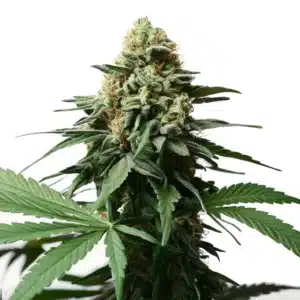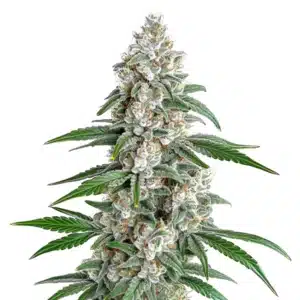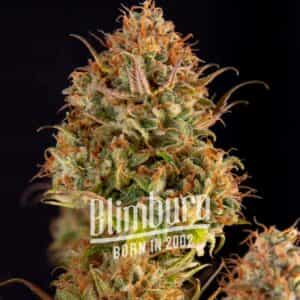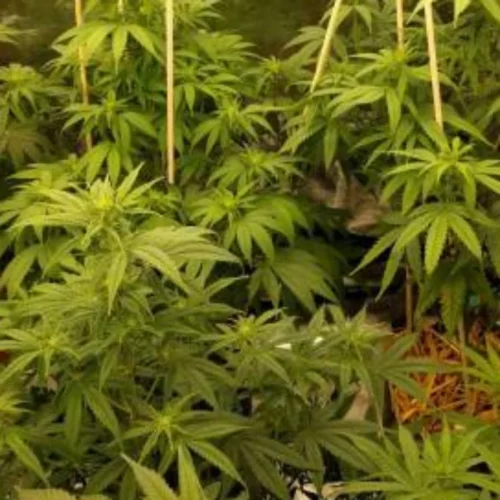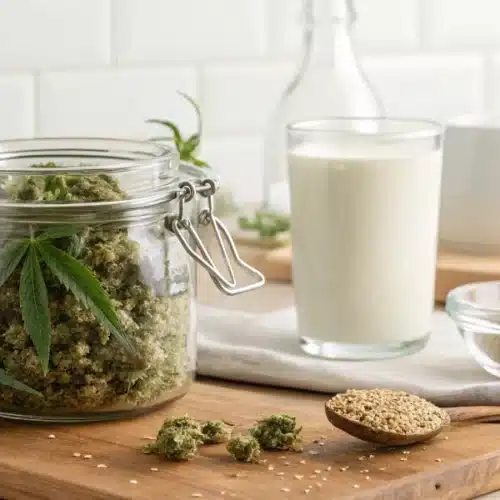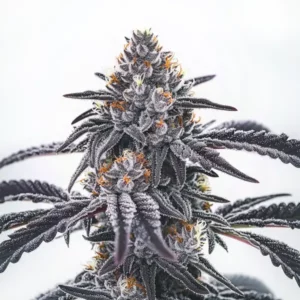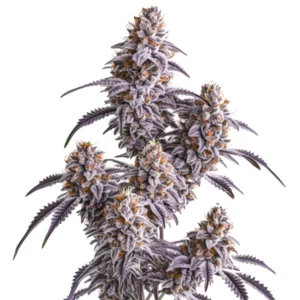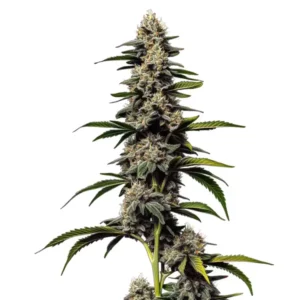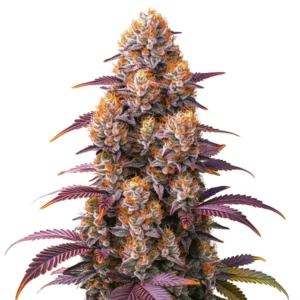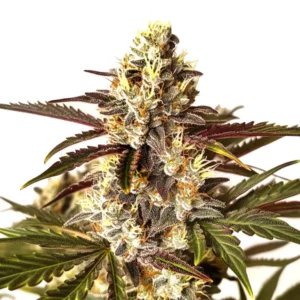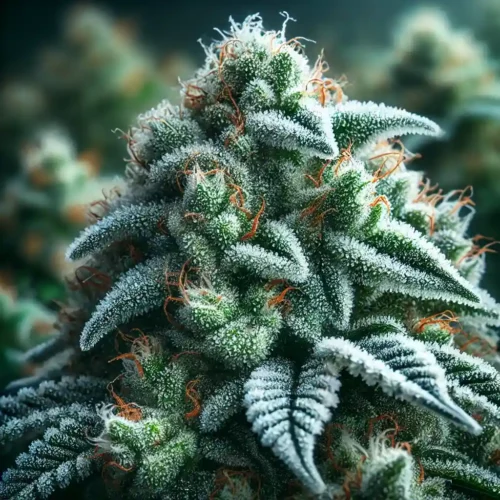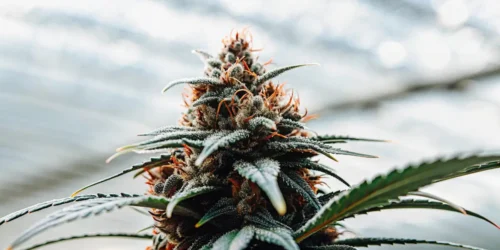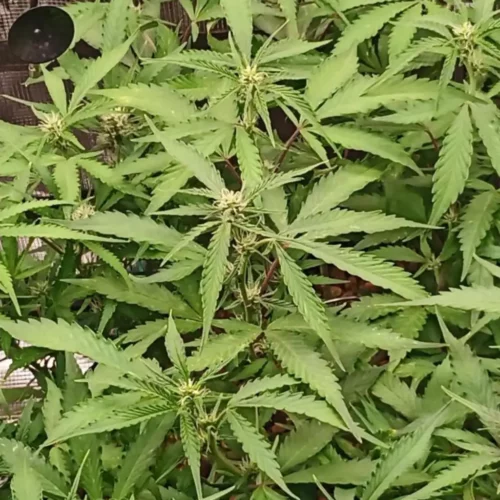The Frosty Phenomenon in Cannabis
In the realm of cannabis cultivation, the appearance of frosted flower weed holds a particular allure among enthusiasts and cultivators alike. This frostiness, characterized by the dense coating of trichomes on the buds, not only indicates quality but also holds key significance in the overall cannabis experience.
Trichomes and Their Importance
Trichomes, the tiny resinous glands covering the surface of cannabis buds, are the heart of this frosty enchantment. These structures are responsible for producing cannabinoids like THC and CBD, along with terpenes, the aromatic compounds lending distinctive scents and flavors to different strains.
Frosty buds, sometimes likened to a glistening layer of snow or a frost-covered landscape, result from an abundance of trichomes. The visual appeal of these frosty weed strains is a testament to their cannabinoid-rich resin.
Role in Potency and Effects
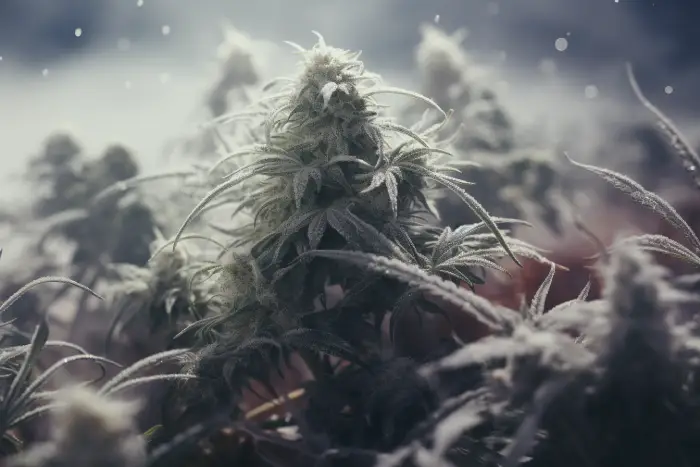
The density and quality of trichomes play a pivotal role in the potency and effects of cannabis. Generally, the more trichomes a strain possesses, the more potent it tends to be. As such, most frosty strains often deliver more intense psychoactive effects owing to their higher THC content.
Moreover, the terpenes produced within trichomes contribute not only to the aroma and flavor but also to the nuanced effects of different strains. For instance, certain terpenes like limonene and myrcene may influence mood, while others like pinene or linalool might impart relaxing or energizing effects.
Evolution of New Frosty Strains
Advancements in cannabis breeding and cultivation techniques have led to the creation of numerous new strains of weed with varying degrees of frostiness. Breeders and growers are constantly experimenting to produce strains that not only exhibit exceptional trichome density but also boast unique terpene profiles and cannabinoid concentrations.
These developments cater to the diverse preferences of consumers, whether they seek the highest potency, a specific flavor profile, or a particular set of effects. The pursuit of frosty buds has become synonymous with striving for superior quality in the cannabis community.
Promos & Deals
What Makes a Strain Frosty: Unraveling the Trichome Magic
Trichomes are the tiny, crystalline structures covering cannabis buds that give them their characteristic frosty appearance. The trichome anatomy and its magical significance in producing frosty buds is pivotal.
Trichome Anatomy and Function
Trichomes come in different forms: glandular and non-glandular. Glandular trichomes, the ones responsible for the production of cannabinoids and terpenes, exist in three main types: bulbous, sessile, and stalked.
- Bulbous trichomes: These are the smallest and least developed. They are found all over the surface of the plant.
- Sessile trichomes: Slightly larger and more abundant, they contain a stalk that attaches them to the plant’s surface.
- Stalked trichomes: The largest and most prominent type, these have a gland head atop a stalk, which elevates the gland above the plant surface.
Trichomes act as the biochemical factories of cannabis, housing and producing the valuable compounds sought after by users and cultivators alike. These tiny structures synthesize cannabinoids like THC and CBD, along with terpenes and flavonoids, contributing to the unique effects and aromatic profiles of different strains.
How Trichomes Influence Potency and Effects
The concentration and maturity of trichomes significantly influence the potency of a cannabis strain. When trichomes reach their peak development, they contain the highest concentrations of cannabinoids, resulting in more potent effects upon consumption. A visual inspection of trichomes under a microscope can determine the optimal time for harvesting, ensuring the desired potency.
Beyond potency, trichomes also play a vital role in dictating the effects experienced by consumers. The intricate blend of cannabinoids and terpenes within trichomes creates a synergy known as the entourage effect. For instance, strains high in myrcene may offer sedative effects, while those rich in limonene may promote a more uplifting experience. Trichome density and composition thus determine the strain’s overall effects on the body and mind.
Influence of Genetics and Environment on Trichome Development
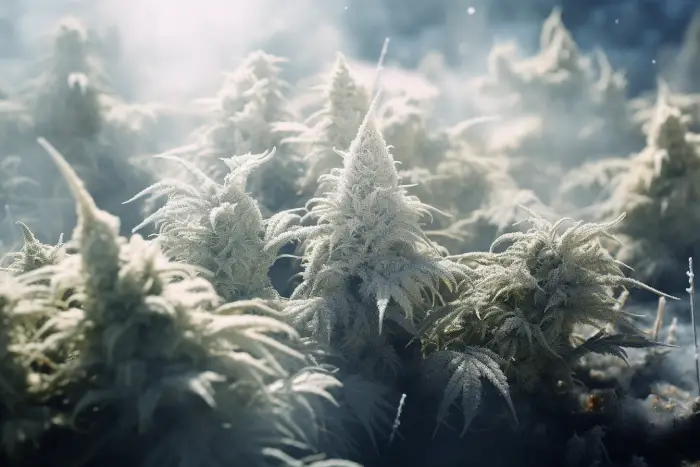
Genetics serve as the foundation for a strain’s trichome development. Some strains inherently possess genetics that promote high trichome production, while others might require specific environmental conditions or cultivation techniques to reach their full potential.
Environmental factors such as light, temperature, humidity, and nutrients also impact trichome development. For instance, exposing plants to slightly cooler temperatures during the flowering stage may encourage the production of more resin and increase trichome density.
Impact on Flavor and Aroma
Trichomes aren’t solely responsible for the potency; they also house terpenes, the aromatic compounds found in cannabis. These terpenes not only provide the distinctive aroma but also contribute significantly to the taste profile of the strain.
The diversity of terpenes within trichomes produces an array of flavors ranging from citrusy and fruity to earthy and piney. The terpene profile, influenced by the health and maturity of trichomes, determines the sensory experience when consuming the strain. Cannabis enthusiasts often seek out frosty strains for their ability to offer an intense flavor experience alongside their potent effects.
Importance for Frosty Weed Strains and Frosty Buds
The most frosty strains, characterized by their dense trichome coverage, tend to have higher potency and exquisite flavors. These strains are a testament to the critical role trichomes play in defining the frostiness of cannabis buds. The abundance and quality of trichomes directly correlate with the frosty appearance of the buds, which often shimmer with a glistening coat of resin.
In summary, trichomes are the guardians of the potency and flavor of cannabis strains. They significantly influence the effects experienced by users and contribute to the rich sensory experience that defines frosty weed strains.
This emphasis on trichomes underscores why most frosty strains are highly sought after for their potency, flavor, and captivating appearance, making them a preferred choice among cannabis connoisseurs and enthusiasts alike.
Top Picks: The Most Frosty Cannabis Strains
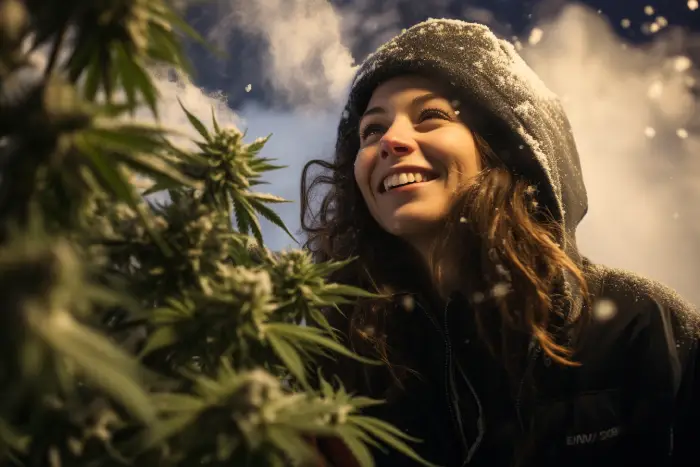
When it comes to frosty weed strains, cannabis enthusiasts seek those that boast a dazzling display of trichomes, resulting in glistening, frosty buds that catch the eye and promise an exceptional experience. Here’s a breakdown of the top 10 most frosty strains, highlighting their unique characteristics and remarkable frostiness:
1. Northern Lights
This classic strain is renowned for its resinous buds that sparkle with trichomes, creating an otherworldly frostiness. The dense colas are coated in a thick layer of resin, emitting an earthy and sweet aroma.
2. Girl Scout Cookies (GSC)
GSC has earned its spot among the most frosty strains due to its dense buds blanketed in sugary trichomes. Its sweet and spicy aroma complements its powerful cerebral effects.
3. White Widow
A staple in the cannabis world, White Widow’s buds are a sight to behold with their frosty appearance, courtesy of its high resin production. This strain offers a balanced high and a unique spicy, earthy flavor.
4. Gelato
Gelato’s vibrant buds shimmer with trichomes, reflecting its potency. This strain is known for its sweet and fruity aroma, coupled with a powerful, euphoric high.
5. OG Kush
OG Kush stands out with its resin-coated buds that emit a distinct earthy, citrus scent. Its exceptional trichome coverage contributes to its potent effects and characteristic frostiness.
6. Blue Dream
Renowned for its exceptional frostiness, Blue Dream’s buds showcase a dense layer of resin glands. Its fruity aroma and balanced effects make it a favorite among consumers.
7. Mimosa
Replacing Wedding Cake, Mimosa exhibits an impressive trichome coverage, resulting in dense, frosty buds. Known for its citrusy, tropical aroma and uplifting effects, Mimosa stands out as a frosty favorite.
8. Gorilla Glue #4
Known for its sticky buds coated in resinous trichomes, Gorilla Glue #4 exudes a pungent, earthy aroma. Its high THC content and frosty appearance make it a popular choice.
9. Zkittlez
Zkittlez’s colorful and resinous buds display an abundance of trichomes, delivering a sweet, fruity flavor. Its relaxing effects and frosty appearance make it an attractive choice.
10. DoSidos
Dosidos earns its place among the frostiest strains with its colorful and resinous buds, abundant in trichomes. Its earthy, floral aroma and potent effects make it a popular choice among cannabis enthusiasts.
These strains stand out for their remarkable trichome coverage, answering the question of what strain has the most trichomes and representing some of the frostiest weed found on the market today. Each strain offers a unique flavor profile, aroma, and effects, making them sought-after choices among both novice and experienced cannabis users seeking the frostiest weed strains available in the market.
Frostiest Strains of the Year: Unmatched Trichome Density
When it comes to discussing frosty weed strains, the spotlight often falls on those with an abundance of trichomes. These delicate crystalline structures house the cannabinoids and terpenes responsible for a strain’s potency and flavor. The most frosty strains boast an impressive density of trichomes, creating a glistening appearance akin to a dusting of frost.
Unparalleled Trichome Abundance
The most coveted frosty strains exhibit an extraordinary trichome density that blankets the surface of the buds. These strains are known to shimmer and sparkle, resembling a winter wonderland encapsulated in cannabis. Such intense trichome coverage indicates a high concentration of cannabinoids and terpenes, often leading to potent effects and exquisite flavors.
Coveted Characteristics of Frosty Weed Strains
These strains tend to entice both connoisseurs and cultivators due to their unique attributes. Their frosty buds not only deliver an exceptionally potent high but also present a visual spectacle with a mosaic of glistening trichomes covering every nook and cranny. The allure of these buds lies not only in their potency but also in their aromatic profiles, often emitting a bouquet of terpenes that captivate the senses.
Most Frosty Strains: A Feast for the Eyes
As enthusiasts and cultivators seek the most frosty strains, it’s the trichome density that draws their attention. While strain preferences vary, the common denominator is the desire for buds resembling a snow-capped landscape. These highly sought-after strains consistently rank among the most frosty strains available, a testament to their exceptional trichome production and visual appeal.
The Quest for New Strains of Weed: Chasing Frosty Buds
In the ever-evolving world of cannabis cultivation, breeders and growers continually push boundaries to introduce new strains that redefine frostiness. The pursuit of frosty buds drives the creation of innovative genetics, aiming to produce even denser trichome formations and unique terpene profiles. These efforts lead to the emergence of novel strains that stand out for their frosty allure.
Cultivation Tips for Frosty Success
Cultivating frosty weed strains requires a meticulous approach to optimize trichome production, resulting in those sought-after frosty buds. Here are key cultivation tips to achieve the utmost frostiness in your cannabis garden:
Environmental Influences
Environmental conditions play a pivotal role in determining trichome production and overall bud frostiness. Maintain a consistent and controlled environment within your grow space. Monitor temperature and humidity levels as fluctuations can affect trichome development. A slight drop in temperature during the flowering stage can stimulate trichome production, contributing to frostier buds.
Strategic Nutrient Management
Implement a nutrient regimen tailored to promote trichome growth without compromising overall plant health. Phosphorus and potassium are crucial elements during the flowering phase, contributing to resin production and trichome density. Utilize organic nutrients rich in micronutrients, which can significantly enhance trichome development, ultimately resulting in more frosty buds.
Precision Lighting
Utilize appropriate lighting throughout the plant’s life cycle. During flowering, consider spectrum-specific lighting like LED grow lights to encourage trichome production. Proper lighting not only supports healthy growth but also stimulates trichome maturation, leading to frostier buds. Controlling light intensity and duration during the flowering stage can significantly impact trichome density and resin production.
Prudent Harvesting Techniques
Harvesting at the optimal time is crucial to preserve trichomes and maintain bud frostiness. The milky-white appearance of trichomes indicates the peak moment for harvesting, signifying the highest concentration of cannabinoids and terpenes. Implement careful handling and trimming techniques to protect the delicate trichomes and retain the frostiness of the buds.
Post-Harvest Care for Frosty Buds
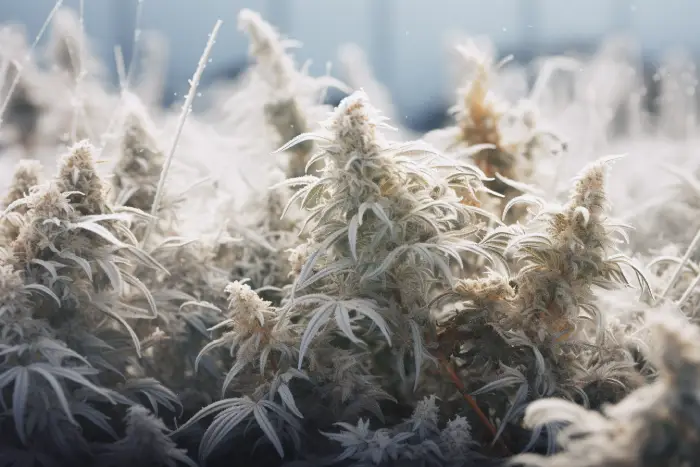
Curing cannabis buds post-harvest is a critical step in preserving trichomes and maintaining the frosty appearance. Properly curing buds in controlled conditions—using glass jars in a dark, cool environment—ensures that trichomes remain intact, contributing to the overall frostiness and potency of the final product.
By meticulously managing environmental factors, nutrient intake, lighting, harvesting timing, and post-harvest procedures, cultivators can significantly enhance trichome production and, consequently, achieve exceptionally frosty buds without compromising quality.
These tips form a fundamental guide for cultivating high-quality, frosty weed strains, emphasizing the importance of precision and care throughout the cultivation process to achieve the most desirable frosty buds.
The Future of Frosty Strains
As the cannabis industry continues to evolve, the quest for frosty weed strains intensifies, driven by consumer demand for top-quality buds with exquisite trichome coverage. This pursuit has led breeders and geneticists to explore innovative methods and technologies to enhance trichome production without sacrificing other essential attributes.
Innovations in Cultivation Techniques for Frosty Buds
The cultivation landscape for frosty strains is witnessing revolutionary advancements. Cultivators are embracing cutting-edge techniques and technologies to maximize trichome development. New lighting systems optimized for trichome production, such as specific LED spectrums and UV lighting, are gaining attention for their potential to boost resinous output without compromising other plant aspects.
Moreover, controlled environmental conditions are being fine-tuned to create the perfect trichome-growing environment. Manipulating factors like temperature, humidity, and CO2 levels during specific growth stages has shown promising results in enhancing trichome density and resin production.
Genetics and Breeding for Enhanced Frostiness
Breeders are delving deep into the genetic makeup of cannabis to uncover the pathways responsible for trichome development. By identifying genes that regulate trichome production and exploring genetic markers associated with high resin content, they aim to develop new strains specifically engineered for frosty buds.
These genetic explorations involve crossbreeding existing frosty strains to amplify their frostiness further. By selectively breeding plants with superior trichome characteristics, breeders aspire to create a new generation of cannabis strains boasting unmatched frostiness and resin production.
Consumer Demand for the Most Frosty Strains
The demand for frosty weed strains is not solely based on aesthetics. Consumers associate frosty buds with potency, quality, and a fuller spectrum of cannabinoids and terpenes. As education about the relationship between trichomes and the entourage effect grows, there’s an increasing preference for strains with dense trichome coverage, representing a higher concentration of beneficial compounds.
This rising demand encourages breeders to innovate continually, pushing the boundaries of what’s achievable in cultivating the most frosty strains. The quest for new strains of weed with unparalleled frostiness remains a driving force behind the cannabis industry’s research and development efforts.
Anticipated Trends in Frosty Cannabis
Looking ahead, the future of frosty strains appears promising. Expectations revolve around the emergence of novel genetic variations that emphasize trichome development without sacrificing yield or other desirable attributes.
Additionally, the market is likely to witness a surge in new strains of weed showcasing exceptional frostiness. Consumers can anticipate a wider array of super frosty weed strains hitting the shelves, catering to various preferences, from high-THC potency to unique terpene profiles, all encapsulated within glistening, resin-rich buds.
The cannabis industry’s relentless pursuit of the most frosty strains indicates an exciting trajectory. With advancements in cultivation techniques, genetic enhancements, and consumer-driven innovation, the future promises a dazzling array of frosty cannabis offerings that elevate the standard of quality and potency in the market.

